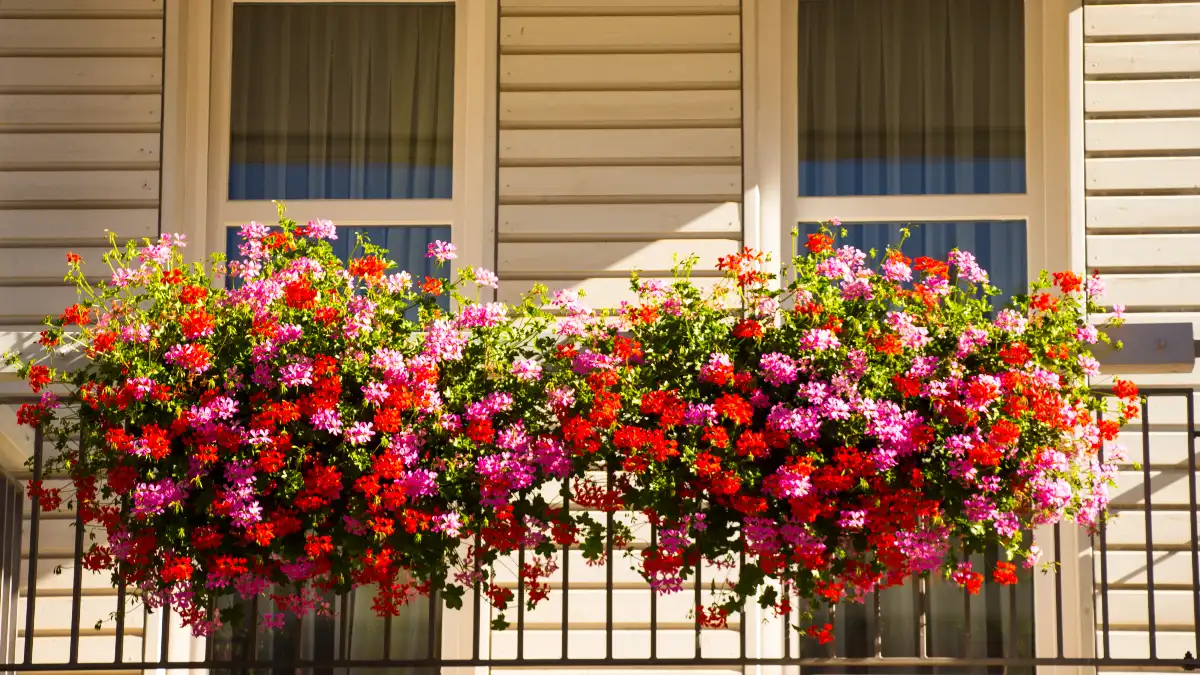No yard? No problem. With a few smart tweaks, a balcony can grow salads, herbs, and color — even in wind and heat. Most people stall out because a small balcony garden feels risky or fiddly: not enough sun, pots that dry out, water dripping on the neighbors, planters that might be too heavy, or confusion over which crops actually succeed in containers. This guide removes the guesswork.
You’ll get nine balcony garden ideas that are water-wise, railing-safe, and landlord-friendly—plus exact container sizes, sun requirements, and time-saving tools. We’ll map your light, pick right-sized pots for a balcony vegetable garden, choose a high-performing (peat-free) potting mix, and automate watering.
You’ll also learn how to tame wind with porous screens for vertical gardening on balcony spaces, and how to keep runoff and weight within building rules. Along the way we’ll lean on the USDA’s 2023 Plant Hardiness Zone Map for climate fit, EPA and university extension data on drip efficiency (20–50% water savings vs. sprinklers), extension container-size charts, RHS guidance on windbreaks, and building-code load basics so you can scale safely. The result: clear steps, fewer failures, and a balcony that actually produces.
Map Sun & Wind To Those That Are Right Plants
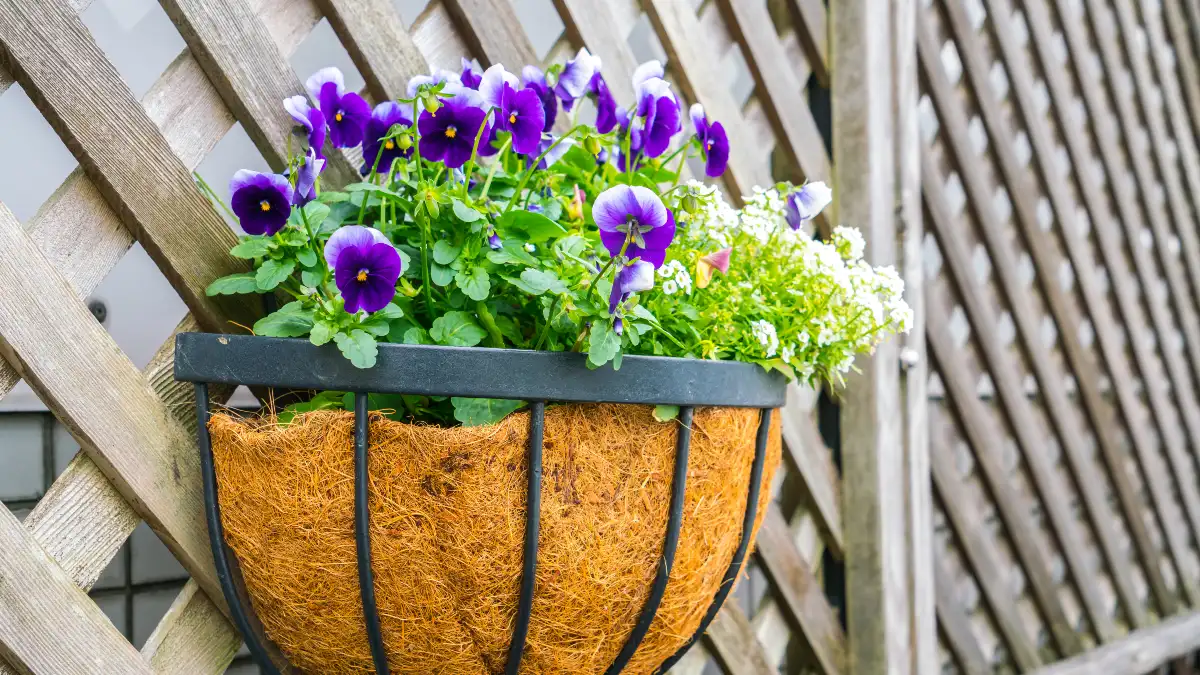
Sun & Wind Audit: Your 10-Minute Balcony Game Plan
Fast measurements + smart layout = better harvests, fewer watering headaches.
How Many Hours = What You Can Grow
Tip: Note sun at 9am, noon, 3pm and total it. Both Penn State & UGA extensions treat 6 hours as the “full sun” threshold.
Balcony Orientation Cheat-Sheet
| Aspect | Light & Heat | Starter Picks |
|---|---|---|
| South / West | Longest sun; pm heat & wind | Cherry tomato (≥10 gal), pepper (3–5 gal), basil |
| East | Gentle am sun; cooler afternoons | Lettuce tray (8–10″), herbs, strawberries |
| North | Short sun; bright shade | Parsley, mint (own pot), chard/kale |
Tame Wind Without Turbulence
- Use porous screens (reed/bamboo or 40–60% mesh) to slow gusts; solid panels cause back-eddies.
- Stake/trellis tall plants; tie supports to heavy pots, not the railing.
- Cluster containers; place tall/heavy planters upwind to create a calm pocket.
- Expect higher watering on exposed balconies—wind boosts evapotranspiration.
2023 Hardiness Zones: Container Overwintering
Find your zone (ZIP/postcode) on the USDA 2023 map.
Balcony rule of thumb: Containers behave ~one zone colder than in-ground beds because roots chill faster.
Plan: Choose hardier cultivars for perennials, or move pots to shelter before hard freezes.
Pick Crops by Your Logged Sun
6–8+ hours: fruiting winners
3–5 hours: leafy & roots
*Mint in its own pot.
4-Step Mini-Guide (Do This Once)
Set phone alarms for 9am, noon, 3pm. Each time, snap a photo and note sun or shade.
Total direct hours this week → label your balcony: Full, Partial, or Partial shade.
Stand on the balcony when it’s breezy. If leaves flutter, plan a porous screen and group pots.
Write your number (e.g., 4.5 h PM-heavy) and pick one crop set from the boxes above.
Sources named: USDA (2023 Plant Hardiness Zone Map); Royal Horticultural Society; Penn State & UGA Extensions; NC State Extension.
Start with a one-day audit. Note direct sun at 9 a.m., noon, 3 p.m. and total it up. Full sun = ~6+ hours; partial = ~4–6; partial shade = ~2–4. That single number decides your plant list and pot sizes. Penn State Extension and UGA Extension both define “full sun” at the 6-hour mark; if you’re under that, shift to leafy greens, herbs, and compact fruiting crops that tolerate partial sun.
Next, sanity-check climate. Look up your location on the USDA 2023 Plant Hardiness Zone Map; it’s the current standard for what perennials and shrubs can overwinter. On balconies, roots chill faster than in ground—containers freeze sooner—so pick hardier cultivars if you plan to overwinter pots.
Now manage wind. Balconies funnel gusts that spike water loss and batter stems. Wind increases plant evapotranspiration, so expect to water more on exposed aspects; a semi-permeable screen (slatted wood or mesh that filters ~50–60% of wind) calms turbulence better than a solid panel. Stake or trellis any tall growers, and group pots to create a low-wind pocket.
Quick win: write your sun total (e.g., “4.5 hours, PM-heavy”). Circle a crop set to match (e.g., lettuces + chard + parsley for partial sun; cherry tomato + hot pepper for full sun). This single step raises your success rate more than any fertilizer ever will.
Pick Containers By Plant Size: Exact Gallons & Depths
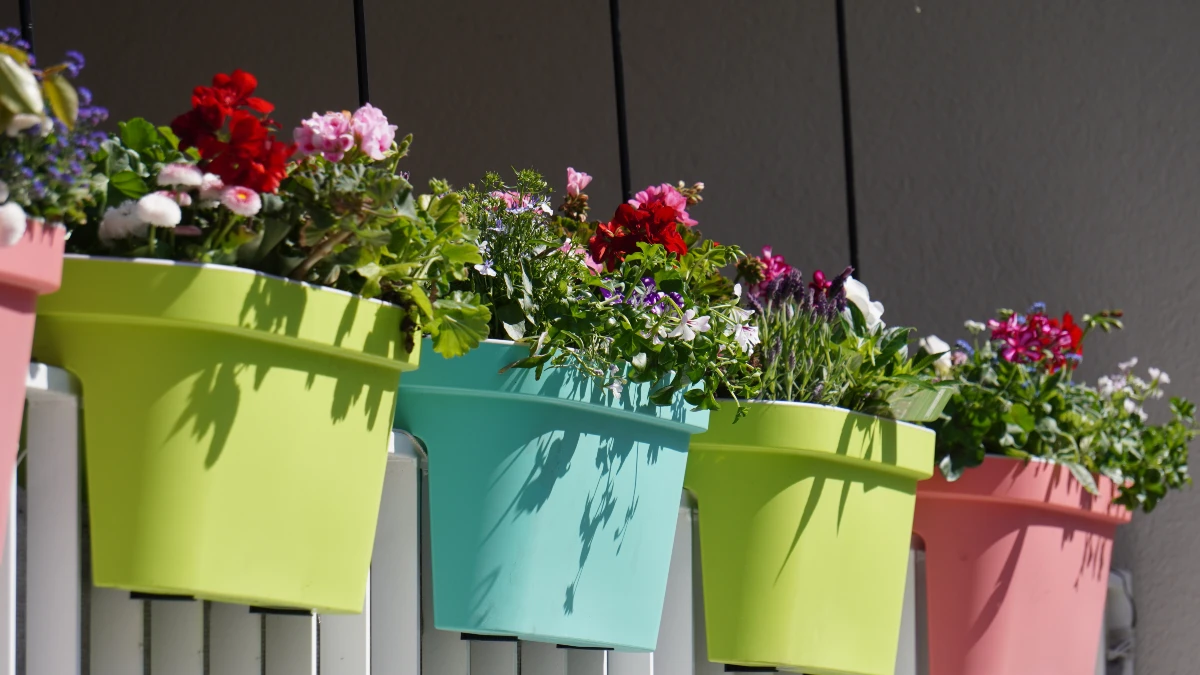
Right-sized pots prevent 80% of container headaches. Use soilless potting mix (not garden soil) so roots get air and excess water can drain. University of Maryland, UNH, UF/IFAS, and Illinois extensions all make the same call here: garden soil is too dense for pots and can drown roots.
Cheatsheet (minimums that actually work):
- Tomatoes: 10+ gal, 14–16 in deep (bigger is easier); dwarf/determinate can run in 5–10 gal but yield/consistency improve as volume increases. Stake/cage.
- Peppers: 3–5 gal, 12–16 in deep; heavier pots stabilize in wind.
- Cucumbers (trellised): 3–5+ gal, 12–18 in deep; add a vertical support tied to the pot, not the railing.
- Leafy greens (lettuce, spinach, Asian greens): trays 8–10 in deep, wide surface area for cut-and-come-again harvests.
- Carrots/radish (short varieties): container 1.5× root length, so a 12 in depth suits 8 in carrots.
Why bigger pots win: Colorado State University notes that larger container sizes make crops easier to care for by buffering water and nutrients—your plants stay hydrated longer and ride out heat spikes. That’s especially helpful on exposed balconies.
Material matters: porous clay dries faster; plastic and glazed ceramic hold moisture longer. If wind is a problem, use heavier containers or weight the base. For a balcony vegetable garden, two 14–20 gal planters beat six tiny pots every time—fewer, bigger containers = fewer failures.
Potting Mix Tat Performs
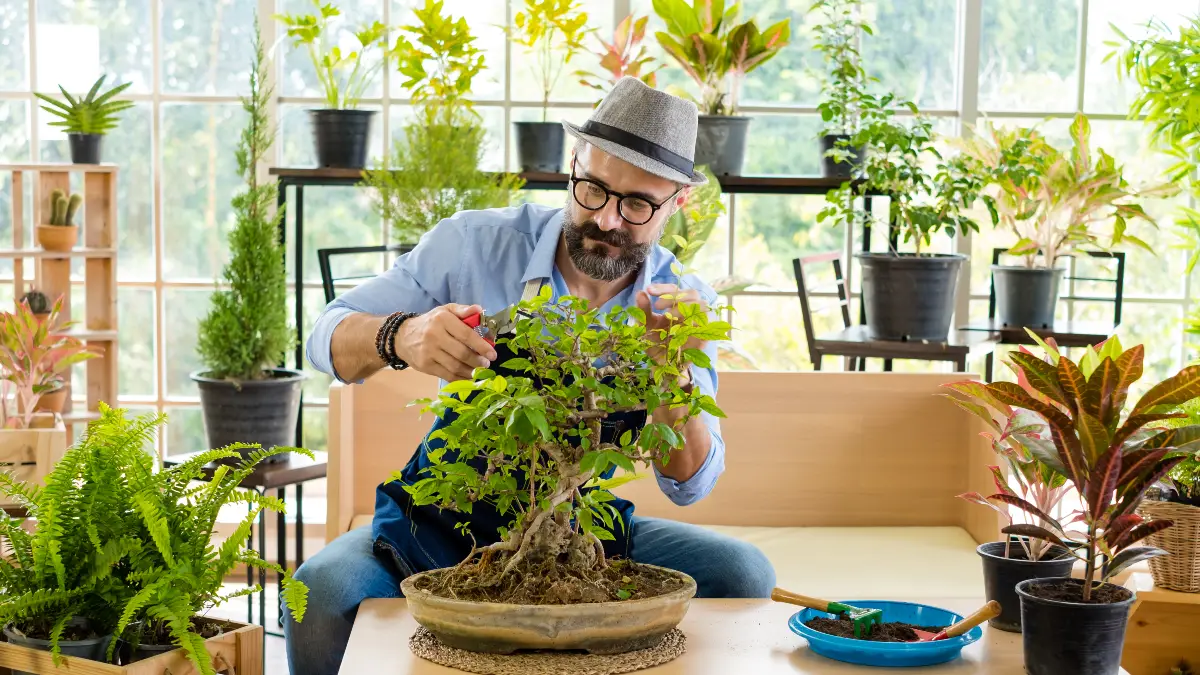
Use fresh, quality potting mix—and mix in a slow-release fertilizer at planting, then top-up with a liquid feed mid-season. University of Maryland Extension explains why: garden soil in containers compacts, stays soggy, and starves roots of air; soilless mixes are engineered to drain and breathe.
In 2025, peat-free is mainstream and effective when you choose the right product. The Royal Horticultural Society (RHS) is moving to 100% peat-free across its operations by the end of 2025, and it promotes the Responsible Sourcing Scheme to help shoppers compare mixes on environmental impact. Oregon State University’s soil scientists also highlight peat extraction’s climate cost—peatlands are massive carbon stores—so going peat-free on a balcony is a meaningful, low-effort win.
Watering with peat-free: the texture is different. RHS advises a finger test below the surface because some peat-free mixes look dry on top while staying moist underneath—a common cause of over-watering and root rot. If your mix skews coarse, water little and often and consider adding a small percentage of perlite for drainage in deep planters.
Shopping tip for a small balcony garden: buy purpose-specific blends (seed-starting vs. container mix vs. ericaceous), and buy fresh bags in season; old stock can slump and wet poorly.
Self-Watering Planters & Grow Bags For Fewer Watering Trips
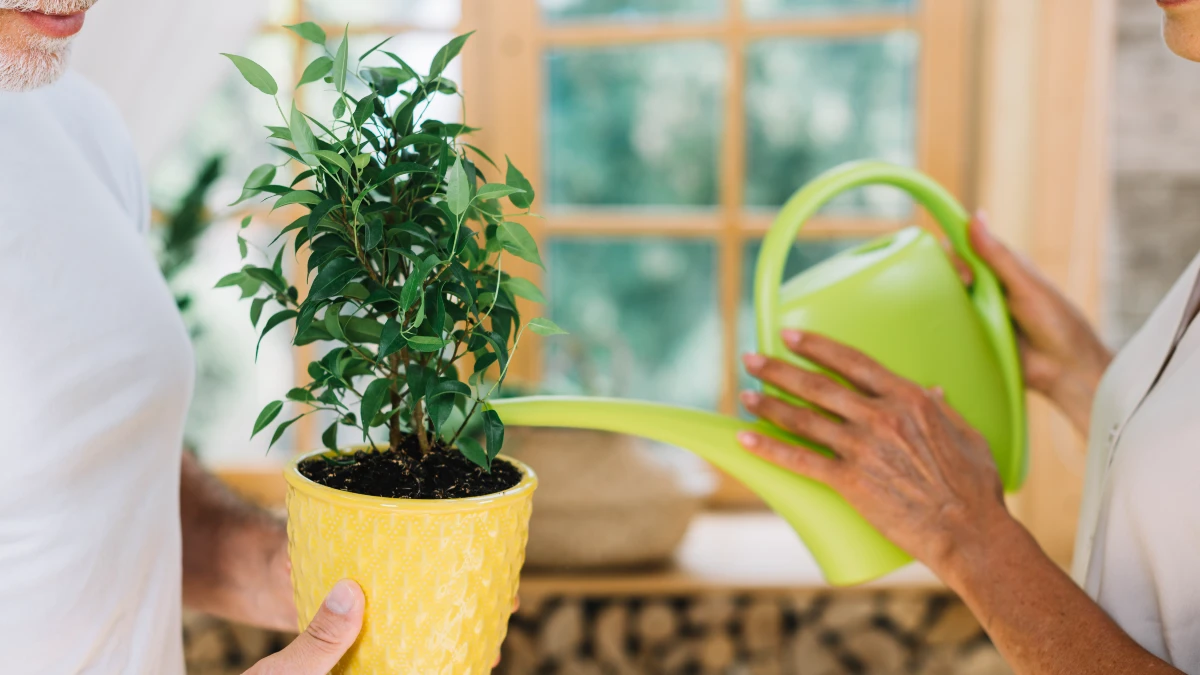
Self-watering (sub-irrigated) planters put a water reservoir under the soil and wick moisture upward. University of Maryland Extension describes how the overflow hole prevents over-filling while roots sip steadily—hugely helpful for tomatoes and peppers. Expect less frequent watering and fewer midday wilt sessions versus open-bottom pots, especially in summer heat.
Independent water-efficiency data is strongest for drip systems (20–50% less water than sprinklers per EPA WaterSense and multiple extensions), but the same principles—delivering water at the root zone, minimizing evaporation and runoff—explain why well-designed self-watering planters reduce watering labor and keep moisture steadier. Pair SIPs with a simple drip line into the fill tube if you leave town; a battery timer handles top-ups automatically.
Fabric grow bags are light, cheap, and great for renters. Rutgers NJAES notes that the breathable fabric “air-prunes” roots—when roots hit the dry, airy edge they branch instead of circling—leading to denser root systems and better nutrient uptake. The trade-off: they dry out faster than plastic, so choose larger volumes (e.g., 10–20 gal for tomatoes; 5+ gal for peppers) or pair them with trays/SIP inserts to stretch intervals.
Set-up recipe for balcony garden ideas that stick: two 15–20 gal SIP planters (tomato + pepper), one 8–10 in deep salad box, and a compact trellis tied to the pots—not the railing. That’s a weekend build that starts paying off immediately.
Micro-Drip Irrigation On a Timer
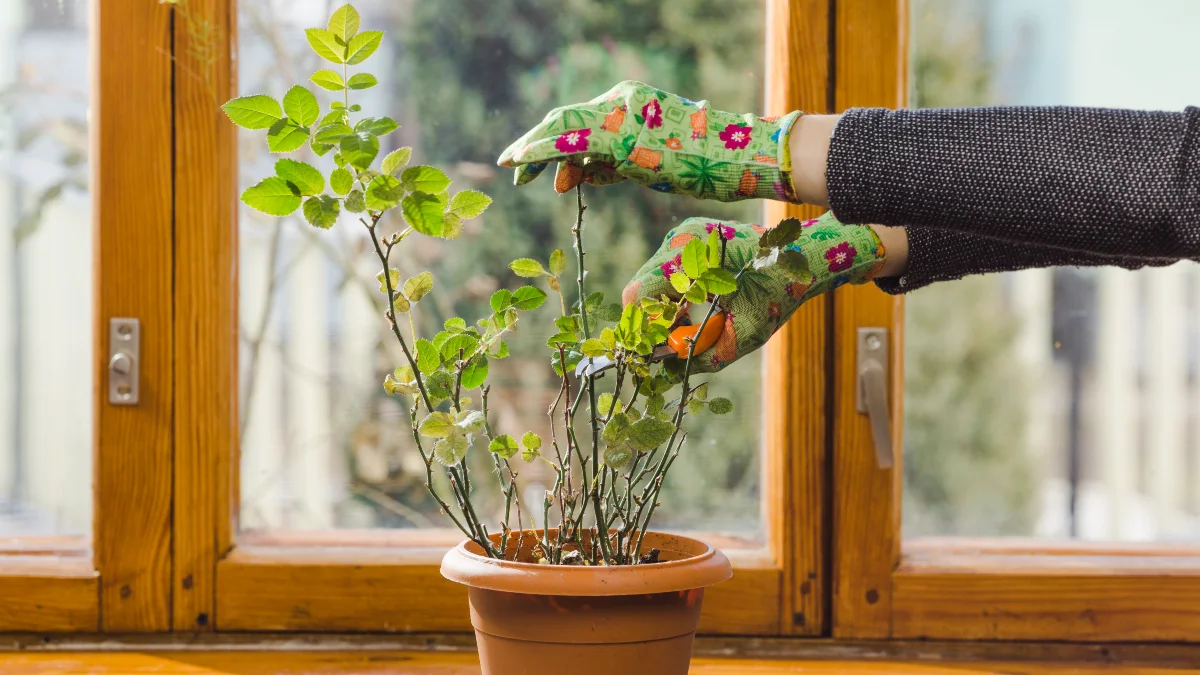
Drip is the easiest “set-and-forget” upgrade for a small balcony garden. The basic kit is simple: backflow preventer → filter → pressure reducer → ¼-in tubing → button emitters (1 GPH) into each pot → battery timer. Put one emitter in small pots, 2–3 in large planters, and run the line along the inside base of containers so water hits the root zone—not the railing.
Why it works: Colorado State University Extension notes drip irrigation typically achieves >90% application efficiency, far higher than spray systems that lose water to evaporation and drift. EPA WaterSense guidance puts savings at ~20–50% less water than sprinklers because drip delivers slowly, directly, and with minimal runoff.
Set zones by thirst: group herbs/greens (moist) on one timer schedule and fruiting crops (tomatoes/peppers; deeper, less frequent cycles) on another. Do a 10-minute test run and check for leaks or overflow. If any saucer fills or a neighbor’s balcony sees drips, shorten the interval, reduce emitter flow, or switch thirsty planters to self-watering containers to buffer peaks. For summer heat waves, add a second short cycle at dawn; plants take up more with cooler media, and you won’t waste water to midday evaporation.
Railing-Safe, Neighbor-Friendly Watering & Drainage
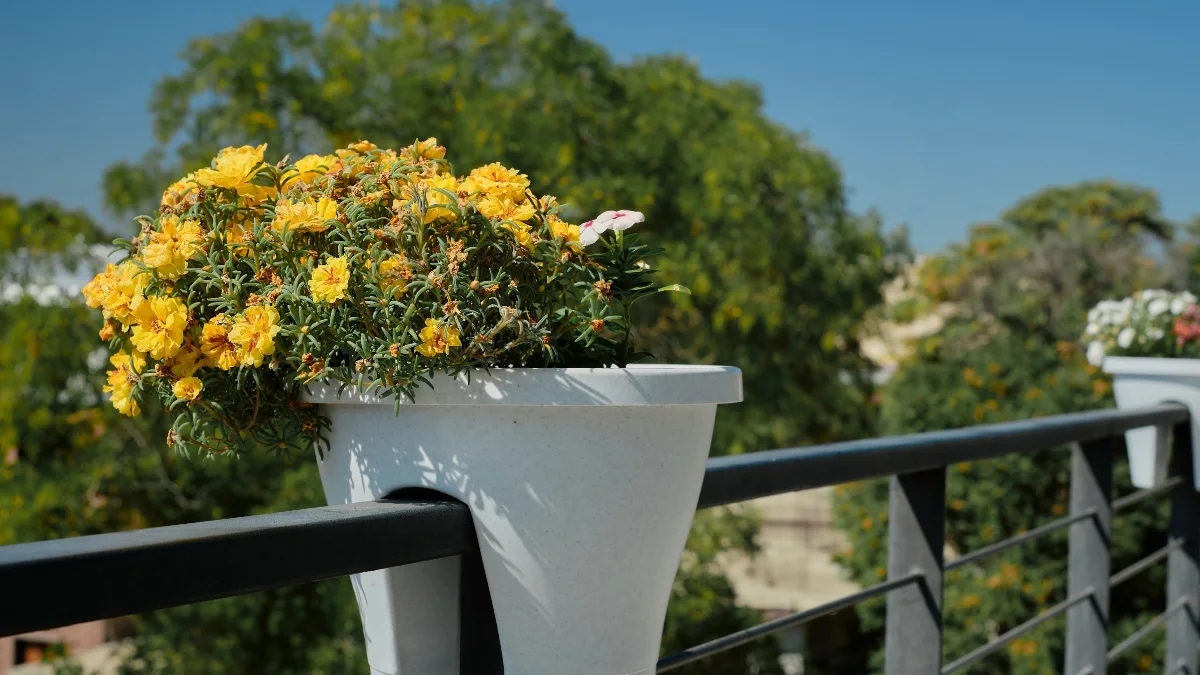
Keep peace (and your deposit) by containing water. The Royal Horticultural Society recommends saucers/trays under pots during dry spells to reduce water and fertilizer waste—they also stop tea-colored runoff from streaking façades or dripping onto balconies below. Empty them after heavy rain and remove in winter to avoid waterlogging.
Mount planters inside the guardrail. Many HOAs/condo rules demand it for safety, and authorities in cities like Paris regularly remind residents that items fixed to balconies must respect building rules and safety obligations; unsecured exterior planters can make you liable if they fall. If your building provides a handbook, check the balcony section before hanging anything.
If runoff is still a risk, swap to self-watering troughs (overflow holes prevent spills) or route your drip emitters into saucers so excess is captured. For renters, snap-in railing brackets that sit inside-facing and a photo of your setup for the landlord go a long way. These balcony garden ideas keep plants hydrated, neighbors happy, and you compliant.
Wind-Smart Screens & Vertical Supports
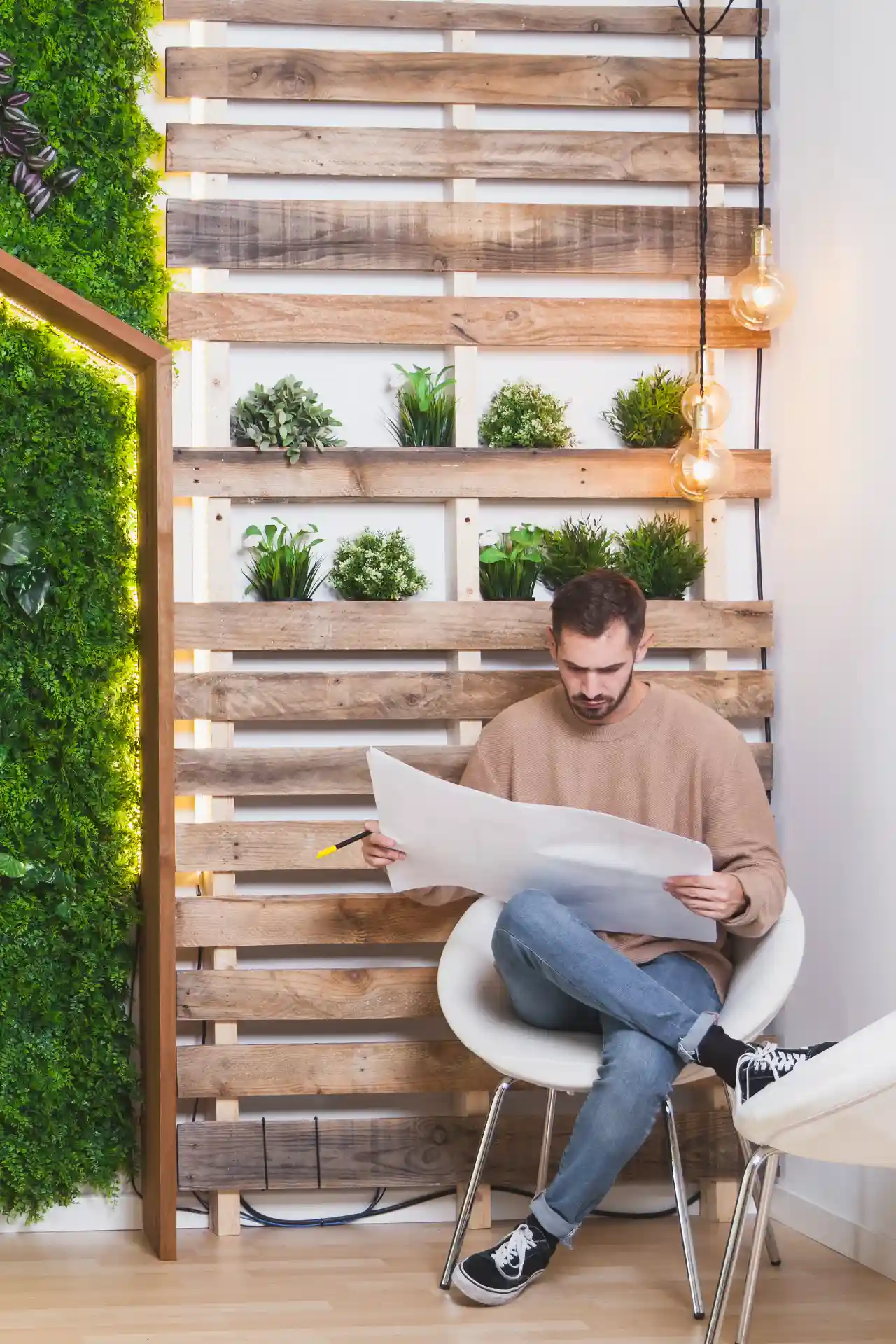
Wind dehydrates pots and shreds tender foliage. The RHS advises porous windbreaks—think reed/bamboo screens or 40–60% shade-mesh—because semi-permeable barriers slow wind without causing turbulent back-eddies (a common problem with solid panels). Fix screens to your own structure (not shared railings) and leave a slight gap at edges so gusts can bleed off.
For vertical gardening on balcony spaces, give climbers a purpose-built trellis anchored to heavy containers, not the guardrail. Vining cucumbers and beans are tidier and healthier when grown upright; Colorado State University spacing notes back trellising for cucumbers, which also improves airflow and picking. Use soft ties and train weekly so stems don’t whip in gusts.
Arrange pots to make a wind buffer: tall/heavy planters upwind, medium planters mid-zone, then low trays or herbs leeward. Cluster containers so they shade each other’s root zones—RHS also highlights grouping to cut watering needs in hot spells. You’ll notice calmer leaves, less tip scorch, and longer moisture intervals by week two.
Plant Picks By Light: Quick Wins For Edibles & Pollinators
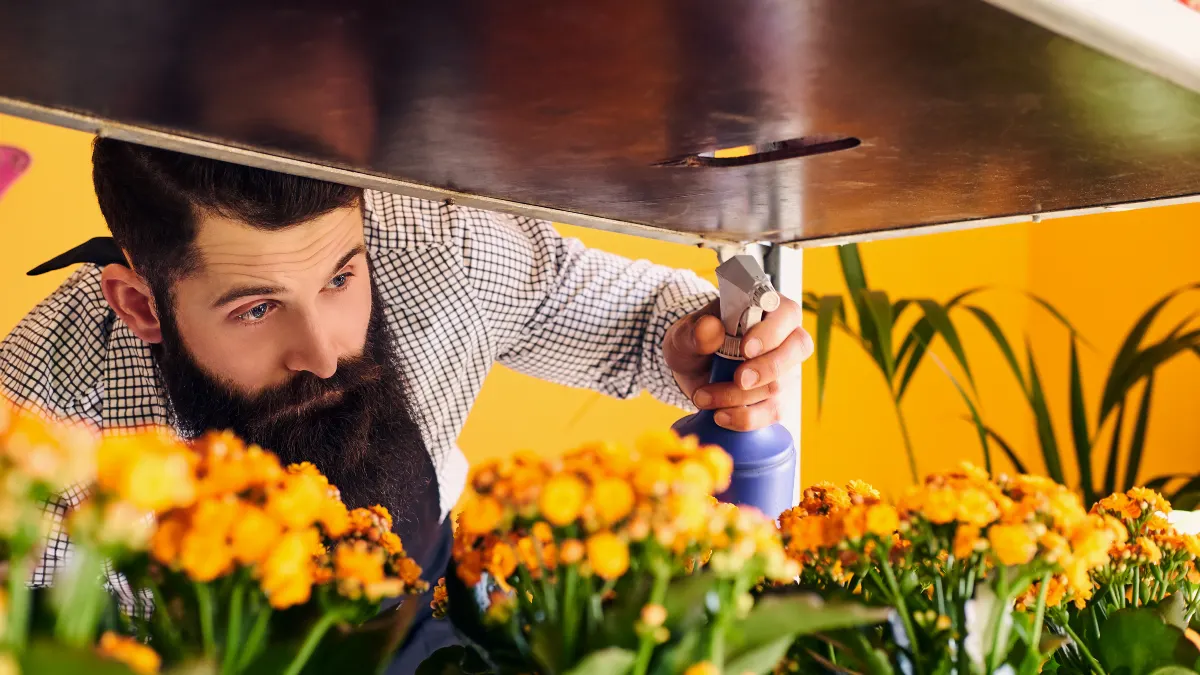
Match crops to your actual sun hours. Full sun (6–8 h): cherry tomatoes (10+ gal), peppers (3–5 gal), basil, trailing strawberries. Partial sun (3–5 h): lettuce, spinach, Asian greens, kale/chard, beets, radish, and many herbs—NC State Extension lists these as shade-tolerant edibles that still perform with 3–5 hours of direct sun.
Two fast starter kits for a balcony vegetable garden:
- Full-sun kit: 1 × 15–20 gal SIP with a cherry tomato + cage; 1 × 5 gal pepper; 1 × 8–10 in deep salad box for cut-and-come-again greens; drip emitters 2-1-1.
- Partial-sun kit: 1 × 8–10 in deep, wide tray for lettuces + spinach; 1 × 5 gal chard or kale; 1 × window-box of parsley, mint (in its own pot), and chives; drip emitters 1-1-1.
Boost biodiversity with pollinator pots—compact marigold, calendula, dwarf zinnias, and a tray of locally native annuals that bloom across the season. Pollinator-friendly containers are a staple in 2025 how-to features and help edibles set fruit by attracting bees and hoverflies (Epic Gardening has multiple container-pollinator guides). Place blooms near fruiting crops but keep foliage off edible leaves to reduce pest hideouts.
Keep the small balcony garden practical: aim for two big planters rather than six tiny ones, harvest little-and-often, and re-sow fast crops every 2–3 weeks. If summer sun is brutal, interplant basil beneath tomatoes for a living mulch and set drip for early morning cycles.
Safety First: Weight, Codes & Building Rules
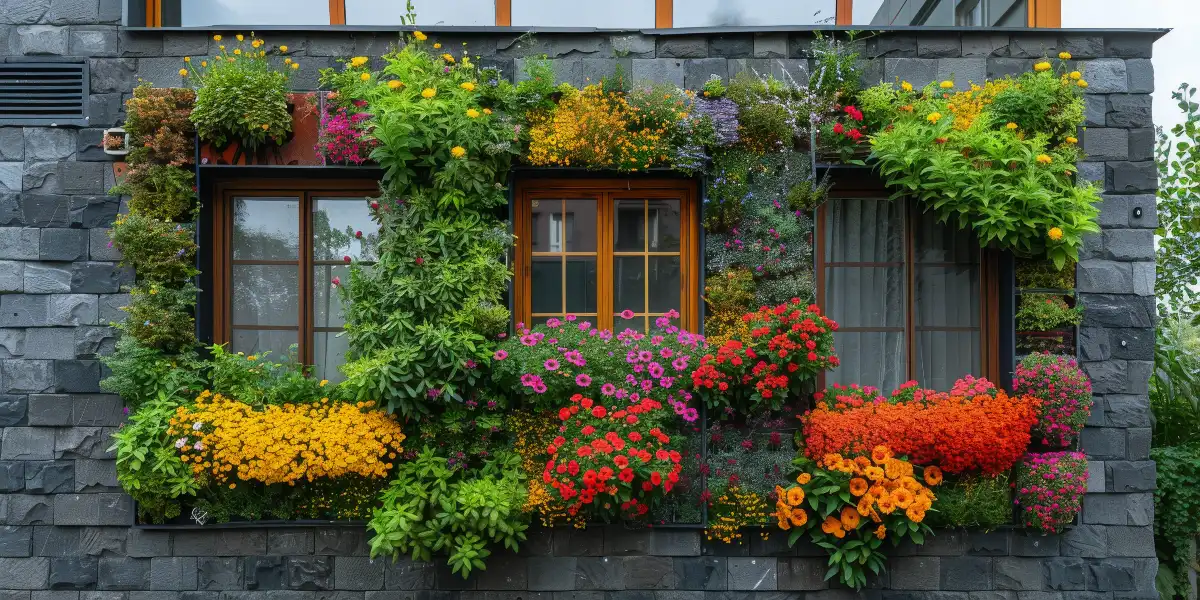
Do the quick math before you scale. Water weighs ~8.34 lb/gal (U.S. Geological Survey). Many modern soilless mixes list a saturated weight near ~55 lb/ft³; that’s manufacturer-reported for popular peat/perlite blends. A 20-gal planter holds about 2.7 ft³ of media; 2.7 × 55 ≈ 150 lb when saturated—before the pot, plant, stakes, or any reservoir. A 2-gal SIP reservoir adds ~17 lb more. It’s easy to exceed 200 lb with just one large container. Space loads evenly and avoid clustering heavy pots at the slab edge.
Know your limits: Many U.S. deck guides assume ~40 psf live load for residential decks, while balconies in several jurisdictions are taken at ~60 psf or 1.5× the adjacent area’s live load under IBC Section 1607. Local building departments and HOA rules vary, so get the actual rating for your building and follow it. If you can’t confirm, stay conservative and keep heavy planters few and centered.
Rules on hanging planters and dripping water differ by city and association. French public guidance, for example, allows planters but puts responsibility on the resident and many copropriété rules require them inside the guardrail; some municipalities worldwide have tightened enforcement after incidents. Check your lease/HOA handbook and, if needed, switch to inside-mounted planters or self-watering troughs to eliminate drips.
Conclusion
You don’t need a yard to grow real food and color. Map your sun and wind, choose right-sized containers, use a high-performing (peat-free) mix, and automate watering with drip. Add porous windbreaks and secure trellises so plants grow upright and stress less.
Then pick crops to match your light and keep everything within building and lease rules. Start small: two large planters, a trellis, and a drip timer can deliver salads and herbs in weeks. Pick one idea and set it up this weekend — begin with two big containers and a drip kit, then scale. Do that, and you’ll turn these balcony garden ideas into steady harvests and a calmer, greener view.

